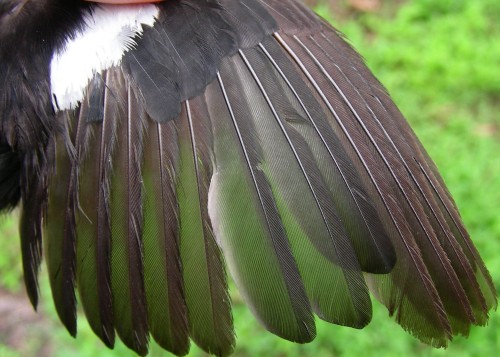SPRING: SY-M (second-year male) |
Males are black, with white shoulders and a small reddish cap that is often concealed from view. Note that even on a perched bird, moult limits on the wing may be visible (e.g. the alula and primaries are noticeably paler than the black greater coverts).

Photo by Marcel Gahbauer, Las Caletas (CR),
April 2008
The open wing shows more clearly the contrast between the fresh black adult feathers and the paler brown (presumably juvenile) feathers. Note also the difference in shape between the new primaries that are broad and round, compared with the narrower and more pointed old primaries.

Photo by Marcel Gahbauer, Las Caletas (CR),
April 2008
The weak structure of the rectrices and their poor condition is suggestive of juvenile feathers that are showing significant wear by spring.

Photo by Marcel Gahbauer, Las Caletas (CR),
April 2008
RETURN TO AGE/SEX
OVERVIEW